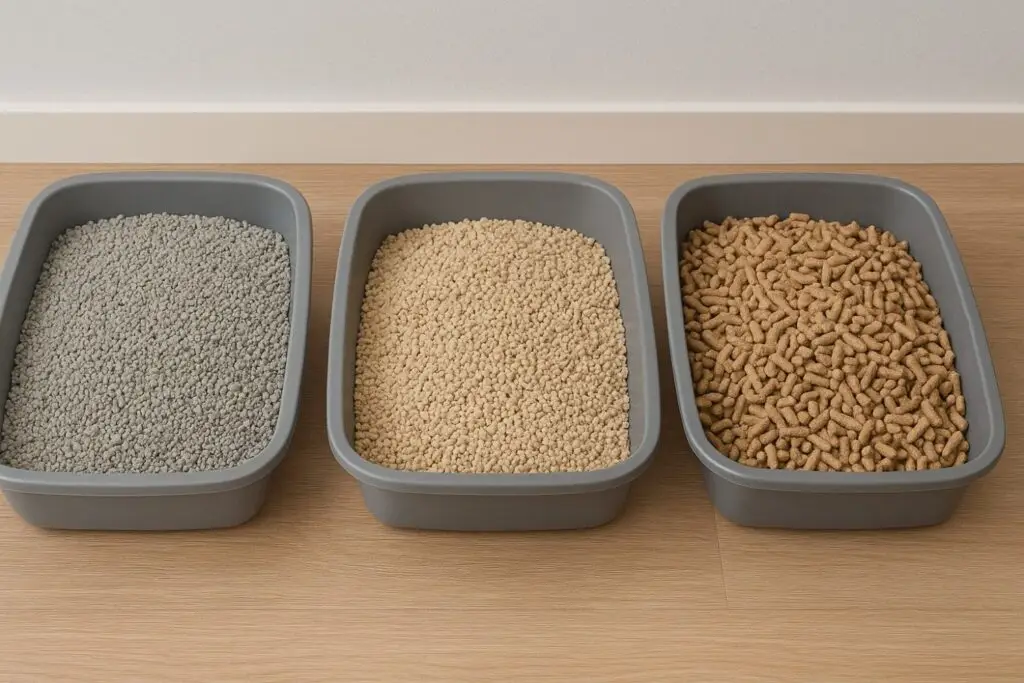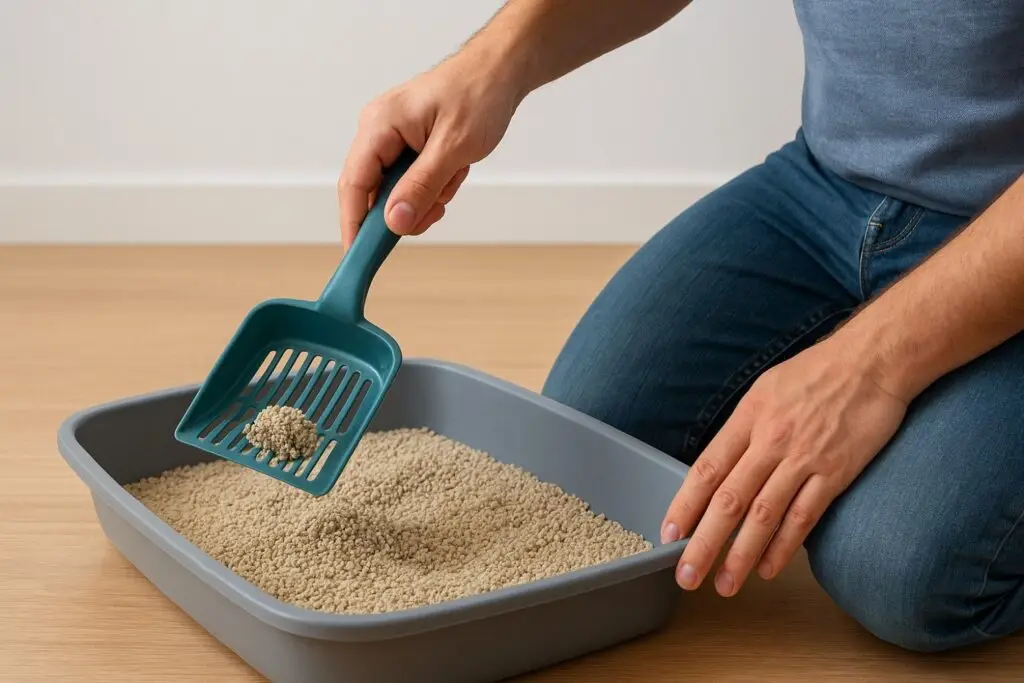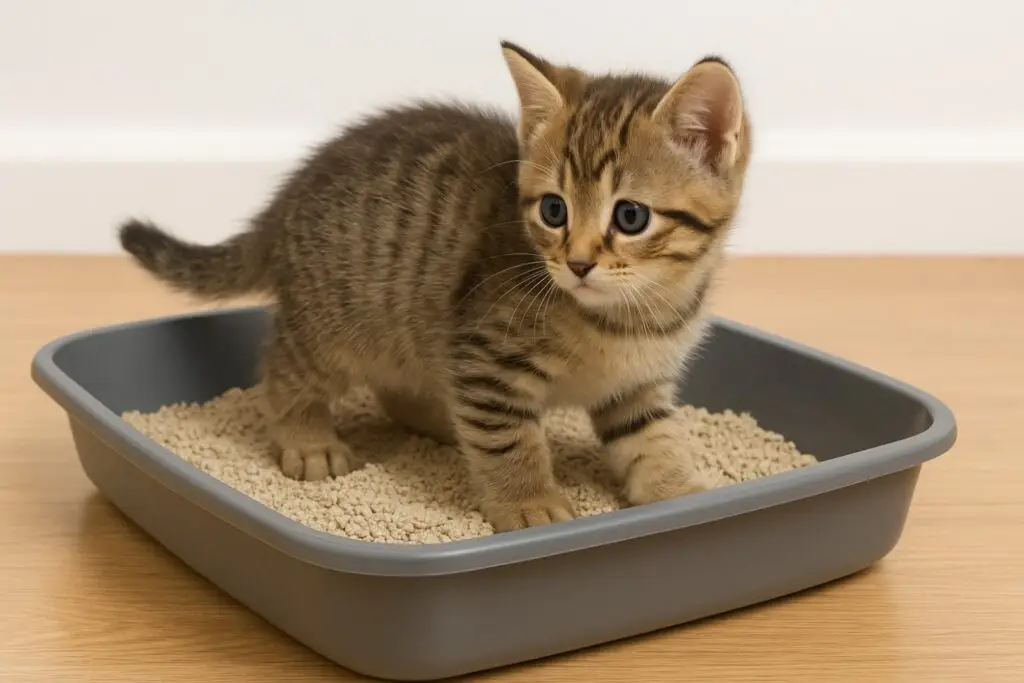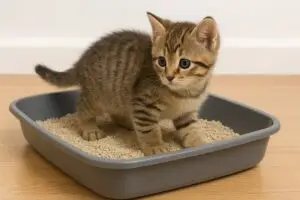You may have heard of puppy potty training. It is a little easier than potty training a puppy. Training a kitten to potty is called kitten litter training. Cats prefer to live in a clean, odor-free environment, and also like humans, they prefer to potty in a secret, safe environment. Therefore, cats have a natural tendency to cover their potty themselves after pottying. This is also their innate trait. More than 90 percent of cats have this tendency, which makes it somewhat easier to litter train kittens.
Key Takeaways
Keep a consistent routine — feed and play at the same times daily.
Avoid changing litter brands too soon.
Don’t move the litter box until training is complete.
Reward with gentle praise or small treats every time they use the box.
If your kitten came from a shelter or breeder, ask what litter they used — using the same type helps with transition.
What is the right time to start kitten litter training?
First of all, we need to understand that each kitten develops at a different pace. Kittens do not start using the litter box until they are three weeks old. Therefore, once your kitten reaches three weeks old, you can continue to stimulate them to go to the bathroom in the litter box.
Gather essential supplies before starting
Before you start litter training your kitten, prepare the following essential supplies to make the training easier for you.
- Kitten litter box
- Kitten litter
- Scooper for removing waste from the box
- Enzyme cleaner to remove odors from accident sites
Follow the step-by-step guide for kitten litter training
Everything you need to know about how to litter train a kitten fast, including setup tips, training steps, and common mistakes to avoid. Follow this step-by-step guide.
choosing the right litter box
The first step to quick litter training is to choose the right litter box for your kitten’s size and comfort, because when your kitten uses the litter box, they want to feel safe, need space to move around, and have access to easy escape routes if necessary.
What to look for in a litter box :
Low sides & open-top: Kittens are small and may have difficulty climbing into a tall litter box. So choose a shallow litter box with sides that are about 2-3 inches high and an open top. If you don’t have one, you can also choose a shoe box for a while.
Size: You should choose a size that allows the kitten to move around easily.
Open or covered? An open litter box is best for your kitten at first. Kittens may be scared in a covered litter box, and a covered litter box can trap smells.
Multiple kittens means multiple litter boxes: The general rule is one litter box per cat or kitten, plus one extra. If you have more than one kitten, a large house, or a multiple-floor place, multiple litter boxes are needed. This prevents territorial issues and accidents
Pro tips: You can even start with a shallow cardboard tray or a baking pan if your kitten is under 8 weeks old.
Choosing the safe litter
The litter you choose can make or break your training success. Kittens should not be given products with strong odors, harsh chemicals, or clumping properties. Always choose a litter that is safe for kittens because, like human babies, kittens learn and explore with their mouths.
Types of litter
Clumping clay litter: Easy to scoop and keeps the box clean.
Unscented litter: Strong fragrances may discourage your kitten from using it.
Natural litter (corn, paper, or wood-based): Great for kittens with sensitive paws or allergies.

Pro tip: Changing brands or scents too often can confuse your kitten.
Stick with one type of litter during the training period and avoid silica or crystal-type litter in the beginning.
Choose the perfect litter box location
As we mentioned at the beginning, cats, like humans, require privacy and a quiet environment to perform their natural functions.
That’s why location matters.
Where to place the litter box
In a quiet corner, away from loud appliances or busy areas.
Far from food and water bowls. Cats tend to avoid eliminating near where they eat.
Easy for your kitten to find — don’t hide it behind closed doors.
Expand gradually their space
If your kitten is under 10 weeks old, start with a small room or plate pen.
Once they have learned to use the litter box reliably, you can give them more access to the house, but as you expand their space, they should always know where their litter box is located.
Introduce your kitten to the litter box

Once the litter box is set up, gently place your kitten inside and let them explore. Repeat this several times a day.
Take them to the litter box, especially after feeding, playtime, and after the kittens have had a relaxing nap.
These are often the times when kittens need to go potty.
Positive reinforcement is the best way to help any pet learn quickly. So when your kitten successfully uses the litter box, give –
them gentle praise and a treat.
Pro tip: Do not force kittens into the litter box, and do not scold or punish them if they have accidents.
This is because they learn slowly due to fear.
keep litter box clean & fresh daily

Cats of all ages don’t like dirty litter boxes. Cats will refuse to go to the litter box if it smells bad.
So, scoop at least once or twice a day to maintain a clean, inviting litter box.
The type of litter you are using will also play a role in how often you should change the litter. For example, once a week for clay litter,
Every two to three weeks for clumping litter.
Regardless of the litter you use, if you notice an odor or wet spots, you should change it immediately.
Wash the box with dish soap every time you change the litter.
Avoid products that contain ammonia or harsh chemicals, as these can repel and poison cats.
The right way to handle accidents
Everyone makes mistakes in the learning process. Whether it’s a human or someone else.
Accidents are part of the learning process. If your kitten has an accident, don’t punish them. Don’t yell at them.
Clean the accident site immediately with an enzyme cleaner to remove odors.
After cleaning, revisit the setup to make sure the litter box is clean, accessible, and in the right place or not.
One thing to remember is to never use ammonia-based cleaners. They smell like urine to cats and can attract them back to the same spot.
The sign that your kitten needs to go to the litter box
All animals show signs that it’s time to go potty. If you watch your kitten closely, you can see signs that it’s time to use the litter box.
If your kitten shows signs of sniffing or rolling around on the floor,
scratching or sitting, meowing and pacing- gently lift your kitten and place them in the litter box.
Doing this consistently will help them quickly establish a relationship with the litter box.
Understand common kitten litter training problems
| Problem | Possible Cause | Solution |
| Avoiding the box | Dirty box, wrong litter, or wrong location | Keep it clean, try unscented litter, and move the box to a quieter spot |
| Peeing outside the box | Stress, new environment, or illness | Keep routine calm; consult a vet if it continues |
| Playing in litter | Normal kitten behavior | Distract with toys, remove right after doing business |
Patience and consistency make kitten litter training successful
With proper litter box setup, the right litter, and positive reinforcement, most kittens will be successfully litter trained within a few days.
So be patient, positive, and consistent.
Keep an eye on your cat’s preferences and habits, and consult your veterinarian or cat behaviorist if in doubt.
A clean, happy cat means a clean, happy home for you, too.




